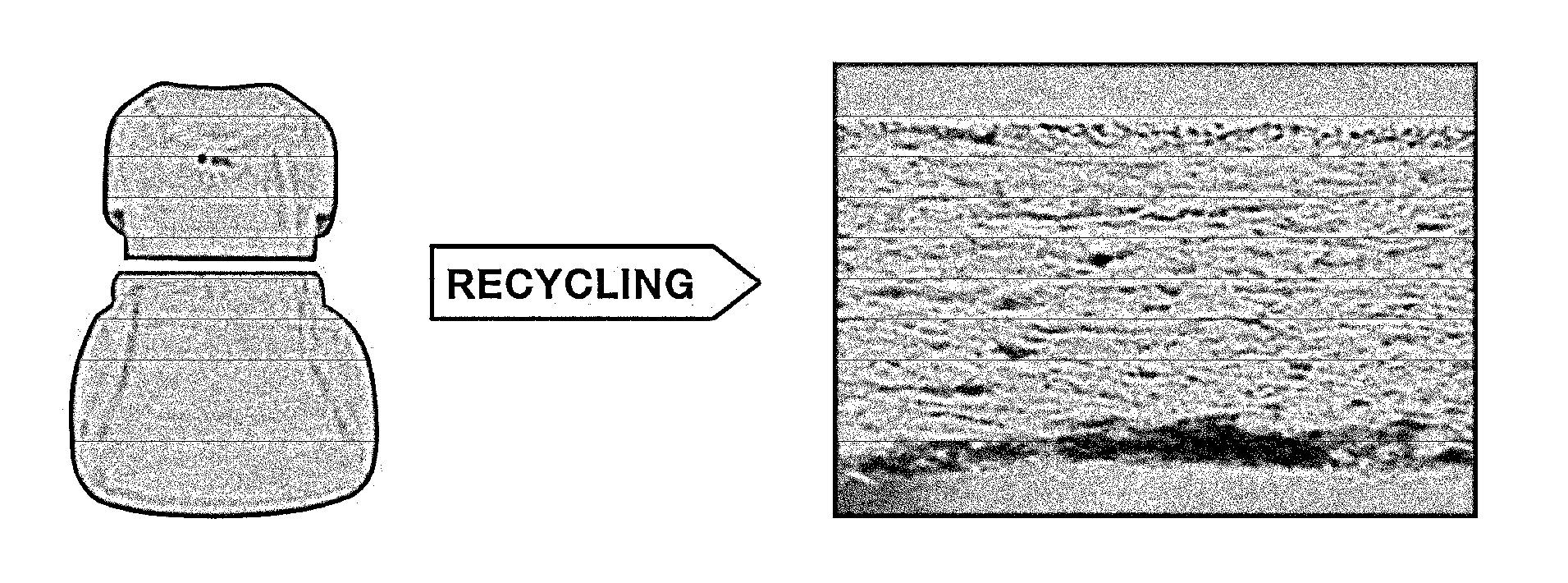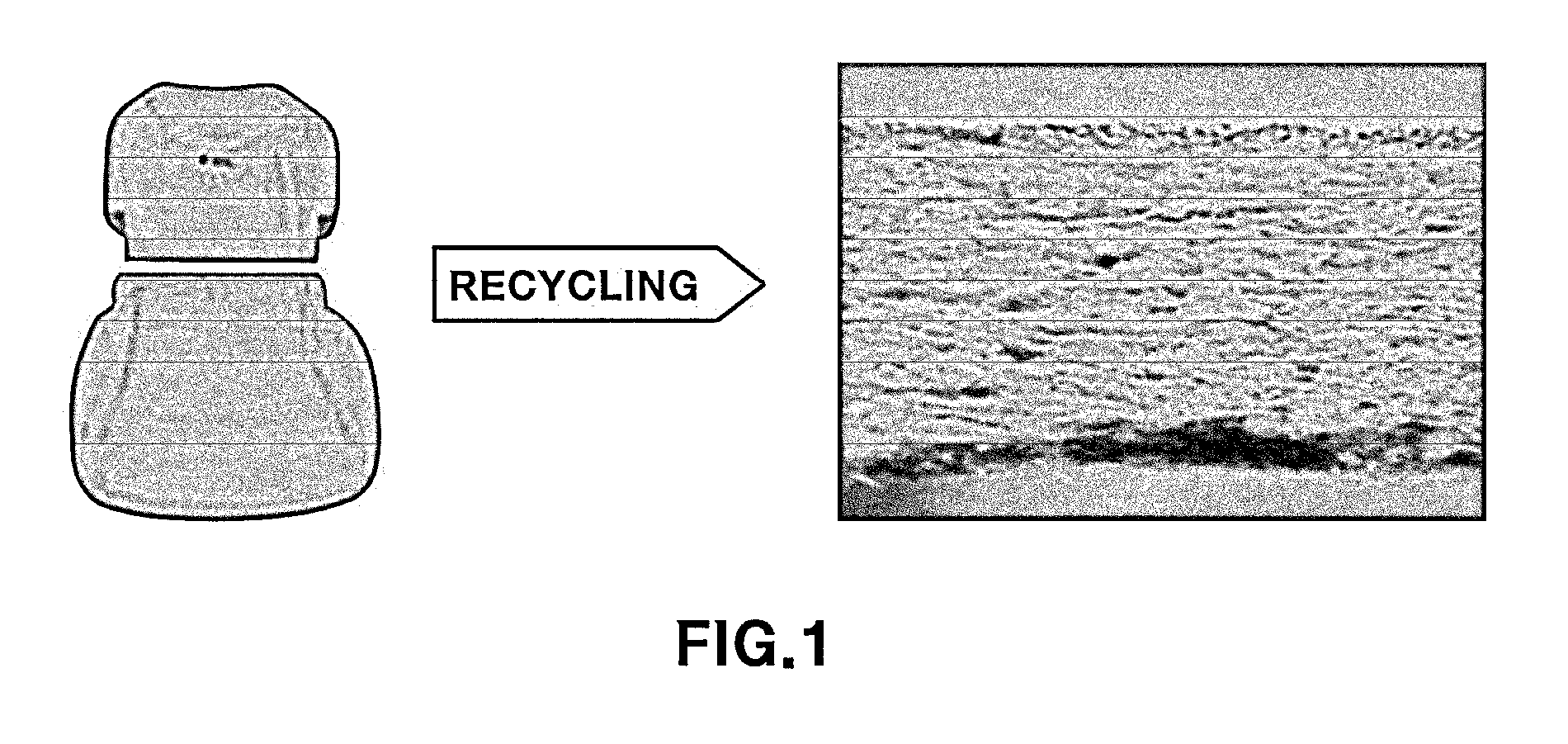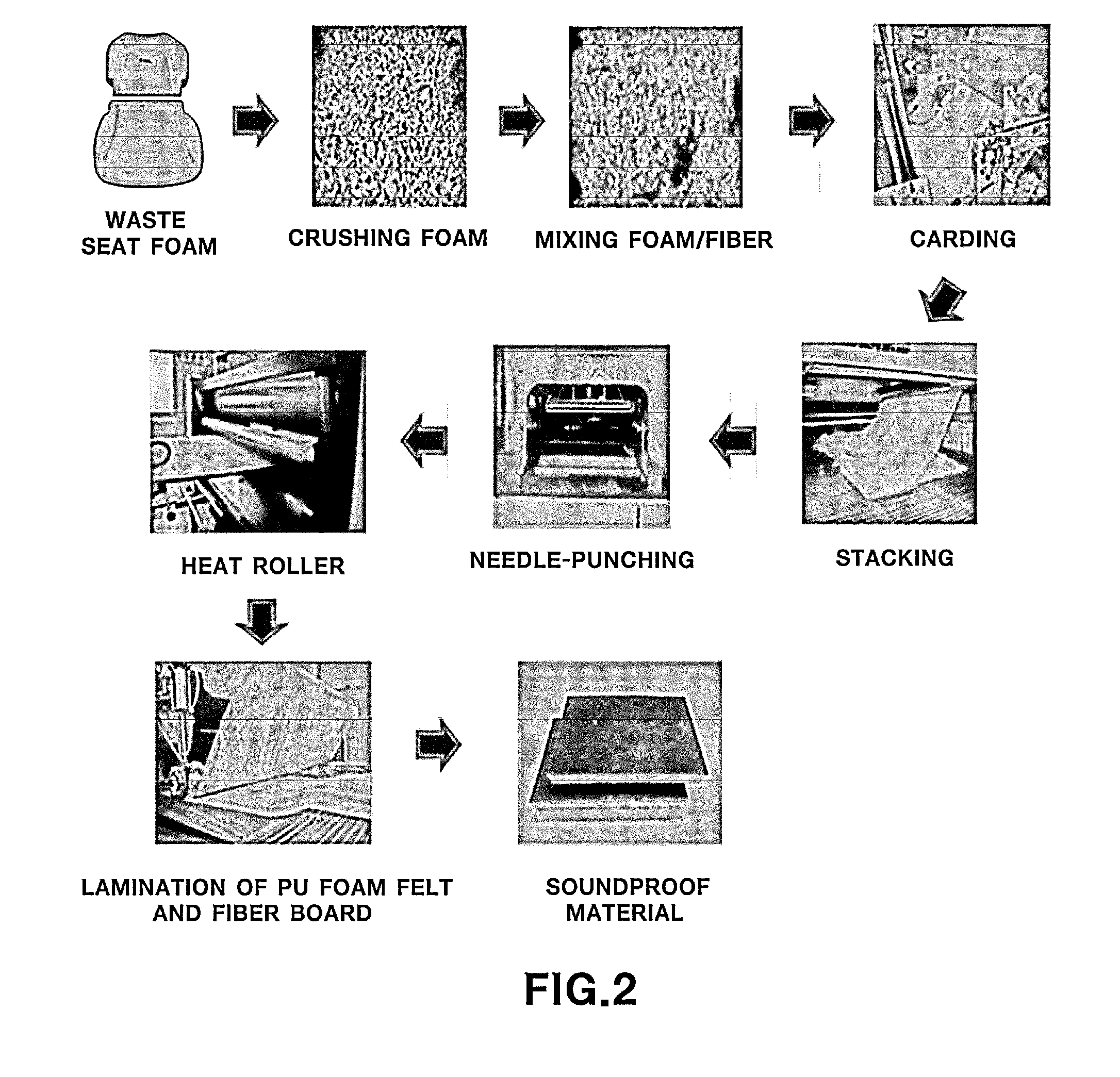Soundproof material using polyurethane foam from car seat and fabrication process thereof
a technology of polyurethane foam and car seats, which is applied in the field of polyurethane foam recycling, can solve the problems of limited use of conventional physical recycling methods, inability to economically recycle chemical waste, and inability to meet the requirements of environmental protection, so as to improve mechanical rigidity and sound insulation properties, reduce manufacturing costs of parts, and improve environmental protection. the effect of
- Summary
- Abstract
- Description
- Claims
- Application Information
AI Technical Summary
Benefits of technology
Problems solved by technology
Method used
Image
Examples
example 1
[0101]10 wt % of a PET fiber, 10 wt % of a LM PET fiber, 10 wt % of a PP fiber, and 20 wt % of a thermoplastic resin were introduced into 50 wt % of thermosetting polyurethane foam obtained by crushing PU foam from seats of end-of-life vehicles into fine particles. This process resulted in at least some impregnation of the thermoplastic resin instead of the fibers, which increased mechanical strength of a product, but resulted in partial coating of the mixture with the melted thermoplastic resin which decreased the sound absorbing property and dimensional stability of the product.
example 2
[0102]10 wt % of a PET fiber, 10 wt % of a LM PET fiber, 20 wt % of a PP fiber, and 50 g / m2 of a thermoplastic film were introduced into 50 wt % of thermosetting polyurethane foam obtained by crushing PU foam from seats of end-of-life vehicles into fine particles. A product prepared by laminating the thermoplastic film thereon had better sound insulating property and higher mechanical strength than those prepared according to Comparative Examples 1 and 2.
example 3
[0103]A sound absorbing layer including 50 wt % of thermosetting polyurethane foam obtained by crushing PU foam from waste seats from end-of-life vehicles into fine particles, 10 wt % of a PET fiber, 20 wt % of a LM PET fiber, and 20 wt % of a PP fiber and a sound insulating layer including 20 wt % of a PET fiber, 40 wt % of a LM PET fiber, 20 wt % of a PP fiber, and 20 wt % of a thermoplastic resin were laminated together. Since the sound insulating layer impregnated with the thermoplastic resin was laminated, the soundproof material demonstrated better sound insulating property than those of Comparative Examples 1 and 2 and better mechanical strength than that of Comparative Example 3 (FIGS. 11 and 12).
PUM
| Property | Measurement | Unit |
|---|---|---|
| size | aaaaa | aaaaa |
| weight | aaaaa | aaaaa |
| melting point | aaaaa | aaaaa |
Abstract
Description
Claims
Application Information
 Login to View More
Login to View More - R&D
- Intellectual Property
- Life Sciences
- Materials
- Tech Scout
- Unparalleled Data Quality
- Higher Quality Content
- 60% Fewer Hallucinations
Browse by: Latest US Patents, China's latest patents, Technical Efficacy Thesaurus, Application Domain, Technology Topic, Popular Technical Reports.
© 2025 PatSnap. All rights reserved.Legal|Privacy policy|Modern Slavery Act Transparency Statement|Sitemap|About US| Contact US: help@patsnap.com



